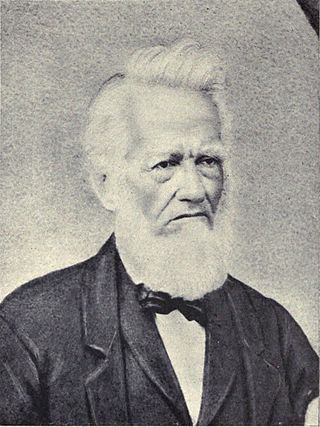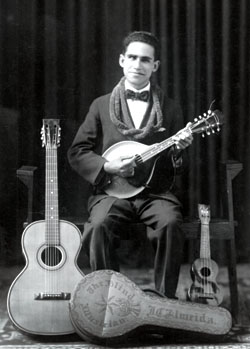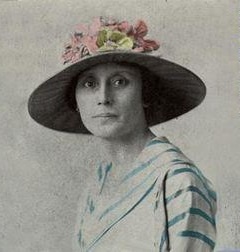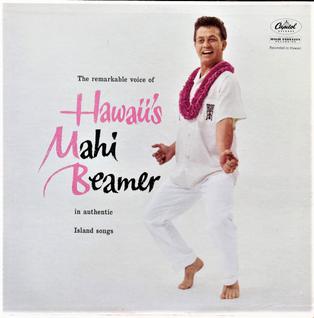The music of Hawaii includes an array of traditional and popular styles, ranging from native Hawaiian folk music to modern rock and hip hop. Styles like slack-key guitar are well known worldwide, while Hawaiian-tinged music is a frequent part of Hollywood soundtracks. Hawaii also made a contribution to country music with the introduction of the steel guitar. In addition, the music which began to be played by Puerto Ricans in Hawaii in the early 1900s is called cachi cachi music, on the islands of Hawaii.

Hilo Hattie was a Hawaiian singer, hula dancer, actress and comedienne of Native Hawaiian ancestry.

The Waiākea Mission Station was the first Christian mission on the eastern side of the Island of Hawaiʻi. Also known as the Hilo Station, the latest structure is now called Haili Church.

David Belden Lyman was an early American missionary to Hawaii who opened a boarding school for Hawaiians. His wife Sarah Joiner Lyman (1805–1885) taught at the boarding school and kept an important journal. They had several notable descendants.

John Kameaaloha Almeida was a blind musician and songwriter from Oahu, Hawaii.

Benjamin Kapena Kalama was an American singer with a honey-voiced falsetto. He is credited with discovering and nurturing Alfred Apaka, and was part of several groups. Until the day Apaka died, Kalama was coaching and arranging music for him.

The Hawaiian Music Hall of Fame is an organization dedicated to recognizing the cultural importance of the music of Hawaii and hula. Established in 1994, the Hawaiian Music Hall of Fame promotes the appreciation and preservation of Hawaiian culture through educational programs and annual inductions honoring significant individuals, groups, institutions, chanters and songs.

Helen Kapuailohia Desha Beamer was a musician, composer of songs in the Hawaiian language, hula dancer and coloratura soprano of Hawaiian ancestry. Her descendants have also become accomplished artists in the U.S. state of Hawaii. In 1928, her duet of "Ke Kali Nei Au" with Sam Kapu Sr. on Columbia Records was the first commercial recording of the Charles E. King composition. She was inducted into the Hawaiian Music Hall of Fame in 1995.

Edwin Mahiʻai (Mahi) Copp Beamer was a tenor falsetto singer, composer and hula dancer of Hawaiian ancestry. He was born in Honolulu in the Territory of Hawaii and is the grandson of Helen Desha Beamer. His father, Milton Hoʻolulu Desha Beamer Sr. was her son. Mahi's mother was Mildred Kaaloehukaiopuaena Copp Beamer. In 2006, Mahi Beamer was inducted into the Hawaiian Music Hall of Fame. He was named a "Living Treasure of Hawaii" in 2008 by the Honpa Hongwanji Mission of Hawaii, which has been recognizing Hawaii's treasures since 1976. He received the 1992 State of Hawaii Recognition Award for his musical contributions to the state and for perpetuating his grandmother's music. Beamer was the 1993 recipient of the David Malo award presented by Rotary International for his cultural contributions.

Winona Kapuailohiamanonokalani Desha Beamer was a champion of authentic and ancient Hawaiian culture, publishing many books, musical scores, as well as audio and video recordings on the subject. In her home state, she was known as Auntie Nona. She was an early proponent of the ancient form of the hula being perpetuated through teaching and public performances. Beamer was the granddaughter of Helen Desha Beamer. A cousin to Hawaiian Music Hall of Fame inductee Mahi Beamer, she teamed with him and her cousin Keola to form a touring North American troupe performing ancient hula and the Hawaiian art of storytelling. She was a teacher at Kamehameha Schools for almost 40 years, but had been expelled from that same school as a student in 1937 for dancing the standing hula. Beamer's sons Keola and Kapono are established performers in the Hawaiian music scene. Her grandson Kamanamaikalani Beamer is a professor at the University of Hawaii at Manoa and CEO of the Kohala Center. She ran a Waikiki hula studio for three decades. In 1997—indignant at proposals to cut Hawaiian curriculum from Kamehameha Schools—Beamer became the catalyst for public protest and legal investigation into Bishop Estate management, which eventually led to the removal or resignation of the trustees.
Isabella Haleʻala Kaʻili Desha was a highly regarded Hawaiian composer, musician and kumu hula during the Kingdom of Hawaii and throughout her life. She is descended from notable chiefly lines.

Charles Edward King was an educator, Hawaii territorial legislator, and a songwriter who is most widely known as the composer of "Ke Kali Nei Au". King was inducted into the Hawaiian Music Hall of Fame in 1995. Music historian George Kanahele regarded King as the "Dean of Hawaiian Music", although this sobriquet is more associated with John Kameaaloha Almeida.
Solomon Kamaluhiakekipikealiʻikaʻapunikukealaokamahanahana Bright Sr. was an entertainer of Hawaiian and Castilian ancestry, who played steel guitar and is most widely known as the composer of Hawaiian Cowboy. He was born one of fourteen children to Hawaiian minister Andrew Laukea Bright and church organist Alike Kekipau Bright in Honolulu.

Nani Alapai was a Hawaiian soprano singer during the early 1900s. Despite not receiving any formal musical training, she was hired as a vocalist of the Royal Hawaiian Band by bandmaster Henri Berger. She became the leading prima donna of the early era of Hawaiian music through her traveling performances with the Royal Hawaiian Band in Hawaii and on the mainland United States. Recording a number of songs, she helped popularize "Aloha ʻOe" by Queen Liliʻuokalani with one of the earliest recordings of the song. She directly and indirectly influenced many later Hawaiian musicians including Lena Machado and her adoptive grandson Kahauanu Lake.
Juliana Walanika was a court musician and favorite of King Kalākaua and Queen Liliuokalani, the last rulers of the Kingdom of Hawaii. She was known as the "Manoa Nightingale" or "Hawaii's Nightingale." She was also known as "Julia Walanika" or "Julian Walanika."

The Royal Hawaiian Girls Glee Club is a chorale group of performers who have entertained audiences in Hawaii for a century. Initially a group created through a YWCA program, they became the resident performers at the Royal Hawaiian Hotel. They sang on the first broadcast of Hawaii Calls, and for six decades were the featured entertainment at the Kodak Hula Show in Waikiki.
Na Lani ʻEhā, translated as The Royal Four or The Heavenly Four, refers to the siblings King Kalākaua (1836–1891), Queen Liliʻuokalani (1838–1917), Princess Likelike (1851–1887) and Prince William Pitt Leleiohoku II (1854–1877). All four were composers, known for their patronage and enrichment of Hawaii's musical culture and history. All four of them organized glee clubs. William Pitt Leleiohoku II, the youngest brother who died at age 22, was a guitar master and leader of the Kawaihau Glee Club. Youngest sister Likelike was a musician and a co-founder of the Kaohuokalani Singing Club.
Linda Dela Cruz was a Native Hawaiian singer known as "Hawaii's Canary" and acclaimed for the Hawaiian "ha'i" (falsetto) style of singing. She was honored as an inductee of the Hawaiian Music Hall of Fame twice, once in 2006 as an individual and again in 2015 as part of the Halekulani Girls. After retiring from her musical career, Dela Cruz worked as an activist for Hawaiian rights and served on the board of trustees of the Office of Hawaiian Affairs.
Victoria Keali‘ika‘apunihonua I‘i Rodrigues was a Hawaiian musician and entertainer. Born into a Native Hawaiian family with strong musical roots, Rodrigues preserved and shared traditional Hawaiian songs that might otherwise have been lost, including "Hawai‘i Aloha," "Kaulana Nā Pua," and "Paoakalani". She was honored by multiple organizations for her contributions to Hawaiian culture, including being inducted into the Hawaiian Music Hall of Fame in 1995.
Haunani Kahalewai was a singer and entertainer known as the "First Lady of Song in Hawai‘i". Her distinctive contralto voice spanned three octaves. She was featured on dozens of recordings and headlined the Polynesian Review at the Royal Hawaiian Hotel in Waikiki. Kahalewai was inducted into the Hawaiian Music Hall of Fame in 1996.












